Best Data Analysis Tools to Buy in December 2025
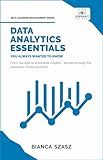
Data Analytics Essentials You Always Wanted To Know : A Practical Guide to Data Analysis Tools and Techniques, Big Data, and Real-World Application for Beginners



Statistics: A Tool for Social Research and Data Analysis (MindTap Course List)


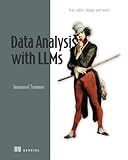
Data Analysis with LLMs: Text, tables, images and sound (In Action)



The Data Economy: Tools and Applications


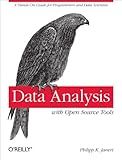
Data Analysis with Open Source Tools: A Hands-On Guide for Programmers and Data Scientists


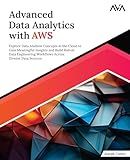
Advanced Data Analytics with AWS: Explore Data Analysis Concepts in the Cloud to Gain Meaningful Insights and Build Robust Data Engineering Workflows ... (Data Analyst — AWS + Databricks Path)



Python Tools for Scientists: An Introduction to Using Anaconda, JupyterLab, and Python's Scientific Libraries


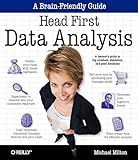
Head First Data Analysis: A learner's guide to big numbers, statistics, and good decisions


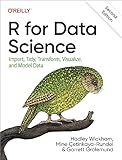
R for Data Science: Import, Tidy, Transform, Visualize, and Model Data


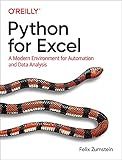
Python for Excel: A Modern Environment for Automation and Data Analysis


Grouping by month and finding the count using Python Pandas can be achieved by following these steps:
- First, import the necessary libraries:
import pandas as pd import datetime
- Load your data into a Pandas DataFrame.
df = pd.read_csv('your_data.csv')
- Convert the date column to a Pandas datetime format.
df['date'] = pd.to_datetime(df['date'])
- Set the date column as the DataFrame's index.
df.set_index('date', inplace=True)
- Use the groupby function to group the DataFrame by month.
df_monthly = df.groupby(pd.Grouper(freq='M')).count()
- Optionally, you can rename the count column for clarity.
df_monthly.rename(columns={'other_column': 'count'}, inplace=True)
Now, df_monthly contains the count of rows for each month. You can print or access the data as per your requirements.
What is the difference between groupby() and agg() functions in Pandas?
The groupby() function in Pandas is used to split a DataFrame into groups based on one or more variables. It groups the data based on the unique values in the specified variable(s) and returns a GroupBy object.
On the other hand, the agg() function is used to perform an aggregation operation on groups of data. It is typically used after the groupby() function to compute summary statistics or apply custom aggregation functions to each group.
The main difference between the two functions is that groupby() creates a grouped object, whereas agg() applies the aggregation operation and returns the result of the aggregation.
In summary, groupby() is used to group the data, while agg() is used to perform an aggregation on the grouped data.
What is the dtype parameter in the groupby() function of Pandas?
The dtype parameter in the groupby() function of Pandas is used to specify the desired data type of the returned aggregated values. It allows you to explicitly set the data type of the groupby result, ensuring that it matches your requirements. By default, the dtype parameter is set to None, where the data type is inferred based on the data in the grouped column(s).
What is the role of the fillna() function in Pandas?
The fillna() function in Pandas is used to fill missing or null values in a DataFrame or Series object. It replaces NaN (Not a Number) values with a specified scalar value or a value computed based on various methods like fill forward, fill backward, interpolation, etc. It is a powerful tool for data cleaning and preprocessing, ensuring that missing values do not affect further analysis or computations.
What is the difference between merge() and join() functions in Pandas?
In pandas, both merge() and join() functions are used to combine or join two DataFrames. However, there are some differences between these functions:
- Syntax: The merge() function is a generic function that can be used to merge two DataFrames based on common columns or indices. The syntax for merge is pd.merge(df1, df2, on='common_column'). On the other hand, the join() function is a specific type of merge that combines two DataFrames based on their indices. The syntax for join is df1.join(df2).
- Index usage: When using merge(), you can specify the columns to join on using the on parameter. The columns do not have to be indices. Whereas, when using join(), the join operation is based on the indices of the DataFrames.
- Default behavior: When using merge(), it performs an inner join by default, resulting in only the matching rows from both DataFrames. In contrast, when using join(), it performs a left join by default, meaning that all rows from the left DataFrame will be included in the result, and only the matching rows from the right DataFrame will be added.
In summary, merge() is a more generic function that offers more flexibility to merge based on common columns, whereas join() is a specific type of merge that combines two DataFrames based on their indices, with a default left join behavior.
What is the use of the concat() function in Pandas?
The concat() function in Pandas is used to concatenate two or more objects, such as Series and DataFrame, along a particular axis (by default, it concatenates along the row axis, i.e., axis=0). It allows combining data from different sources or expanding vertically or horizontally.
The key purpose of the concat() function is to merge objects together, either by stacking them vertically (along rows) or horizontally (along columns). It can be particularly useful in scenarios where you want to combine multiple datasets with a similar structure or break down a large dataset into smaller, manageable chunks.
The concat() function provides flexibility with parameters like axis, join, keys, and ignore_index, allowing customization of the merging operation based on specific requirements. Additionally, it also handles the alignment of data, missing values, and index preservation, ensuring efficient concatenation of data without losing any information.
